NX Eagle is SRAM’s most affordable aftermarket 12-speed mountain bike groupset. Although SRAM SX Eagle sits below it and is frequently specced as original equipment (OEM) on many bikes, consumers are unable to purchase it as a full groupset aftermarket.
SRAM NX Eagle shares a host of features with its more expensive SRAM GX Eagle sibling, such as 12 gears, Matchmaker shifter compatibility and X-Sync 2 chainrings, but there are some key differences.
The NX cassette uses Shimano’s HyperGlide (HG) freehub body instead of SRAM’s XD Driver found on the rest of the brand’s 12-speed cassettes. This means the cassette’s range is only 11-50t compared to 10-52t for the more expensive XD versions.
And, while SRAM’s NX Eagle groupset was a solid performer out on the trails, where shifting was reliable thanks to technology taken from its more expensive counterparts, shifting wasn’t as crisp as I’d have liked and there were quality issues with the derailleur straight out of the box.
For the price, NX Eagle faces tough competition from the likes of Shimano’s 12-speed M6100 Deore groupset, which is where I would spend my money.
SRAM NX Eagle groupset headline figures:
- Total weight (including 170mm cranks with 30t chainring, rear derailleur, 126 link chain, 11-50t cassette and shifter): 2,049g
- Total price (including 170mm cranks with 30t chainring, rear derailleur, 116 link chain, 10-51t cassette and shifter): £365 / $375 / AU$563 / €410
SRAM NX Eagle groupset details and specifications
When SRAM NX Eagle was launched in 2018, we covered most of the specifications and details in the initial review, but I am going to run through some of the top-line specs here.
SRAM NX Eagle crankset with 30t chainring specifications
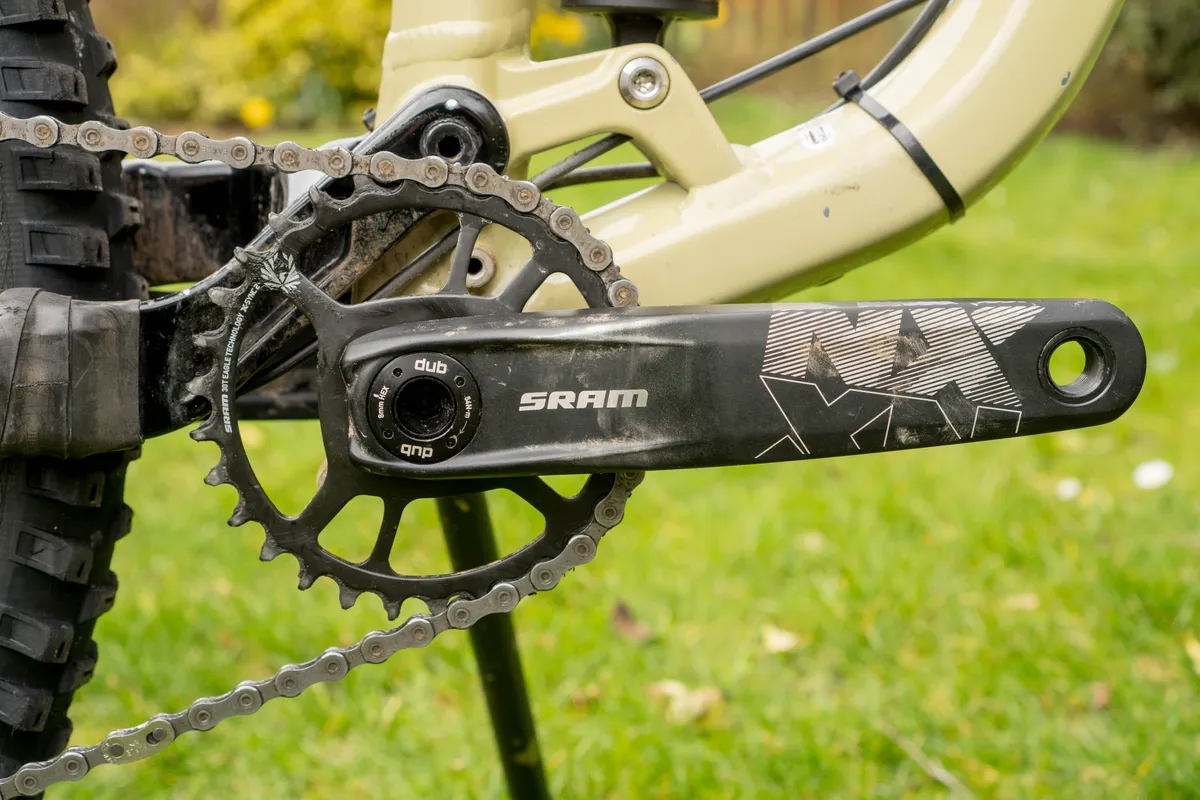
The DUB axle and bottom bracket NX Eagle crankset is made from forged aluminium. The DUB system cranks have a bottom bracket bearing preload lock ring on the non-driveside to help set bearing tension. SRAM claims this system improves bearing sealing and is compatible with its entire range of Eagle products.
The cranks are direct-mount chainring compatible – where the splined chainring is fastened in place using three Torx T25 bolts – and are fitted with SRAM’s X-Sync 2 Eagle narrow-wide tooth profile chainring that’s claimed to reduce the chances of dropped chains.
My 170mm DUB Boost spacing NX Eagle cranks weighed 553g, while the 30t X-Sync 3 NX-level chainring I tested them with weighed 134g.
SRAM NX Eagle shifter specifications

Like SRAM’s more expensive groupsets, the NX Eagle shifter is Matchmaker equipped, which means it can be clamped directly to compatible brake levers to save space on the handlebar.
It also features Zero Loss, SRAM’s name for when the shift lever’s action instantly pulls the gear cable for quicker gear changes. SRAM’s X-Actuation is also present, which is the brand’s name for the 1.12 cable pull ratio used. The shifter can change five easier gears with one push of the paddle, while shifting to harder gears happens one at a time.
Including bar clamp and supplied inner cable, the SRAM NX Eagle shifter weighed 123g.
SRAM NX Eagle rear derailleur specifications

The NX Eagle rear derailleur is compatible with 10-50-tooth (such as SRAM’s previous XD driver cassettes) and 11-50-tooth cassettes only, not SRAM’s latest 10-52-tooth versions.
It has SRAM’s Type-3 Roller Bearing clutch, to help improve chain control, and Cage Lock system, where the derailleur’s cage can be locked in a forward position to make wheel removal easier.
The cage is made from stamped steel and the lower jockey wheel uses the same X-Sync teeth profiling as the chainrings to help improve chain control. Both jockey wheel bearings are made from steel, like the parts fitted to the more expensive GX version.
The derailleur’s parallelogram design – dubbed X-Horizon by SRAM – is claimed to stop the derailleur from moving vertically closer to or away from the cassette. This, SRAM says, “makes ghost shifting impossible” because the derailleur’s body can only move horizontally as gears are changed rather than by bumps causing it to jump about.
The SRAM NX Eagle rear derailleur weighed 300g on my scales.
SRAM NX Eagle cassette and SRAM NX Eagle chain specifications
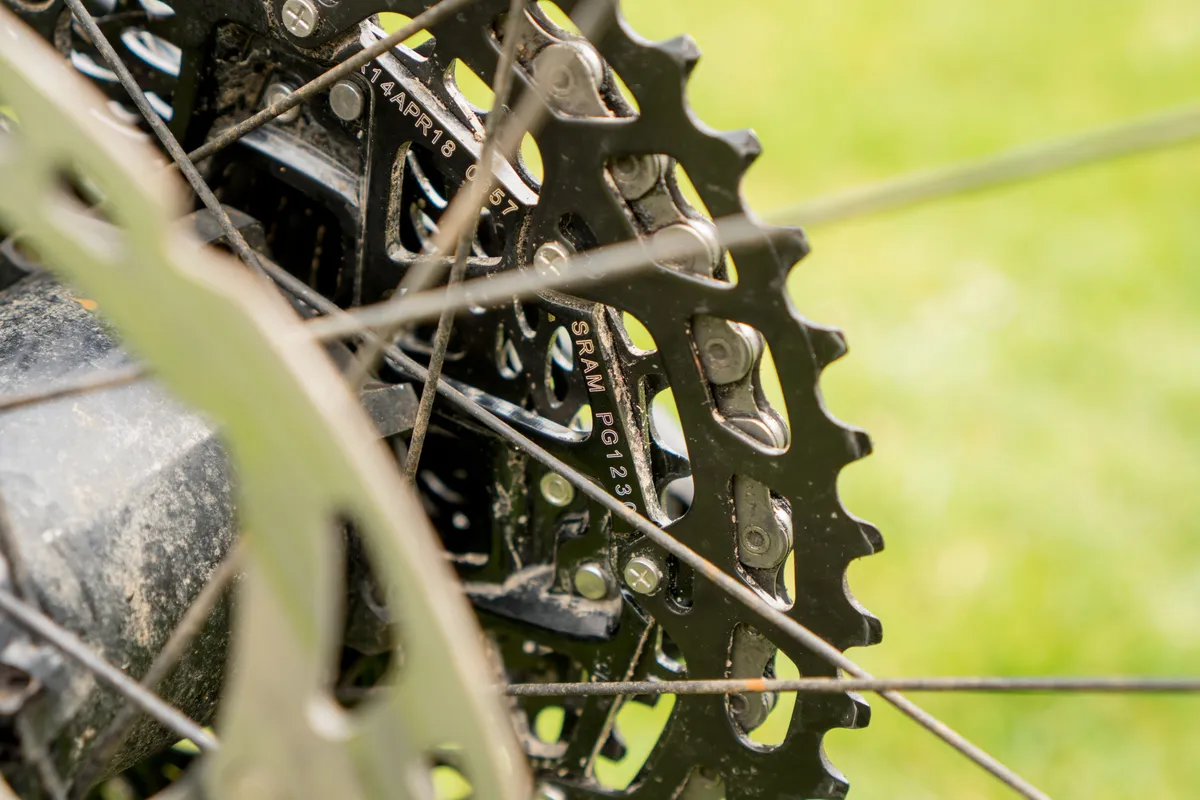
The SRAM NX Eagle PG-1230 cassette differs from GX, X01 and XX1 Eagle cassettes in that it uses Shimano’s HG freehub body standard instead of SRAM’s own XD Driver.
This means the smallest possible sprocket is limited to 11 teeth (rather than the 10-tooth sprocket found on XD-compatible cassettes), and to differentiate NX from more expensive offerings, the largest sprocket is 50-teeth rather than 52.
An aluminium spider has the four lowest ratio sprockets pinned to it, while the remaining cogs are individually installed to the freehub body with spacers. The cassette’s sprockets are all made from stamped steel.
The NX Eagle’s cassette ratios are 11t, 13t, 15t, 17t, 19t, 22t, 25t, 28t, 32t, 36t, 42t and 50t.
On my scales, the SRAM NX Eagle PG-1230 cassette weighed 614g, which is 159g heavier than the lighter GX cassette.

The NX Eagle chain uses SRAM’s one-time use PowerLock master links to join it together. The chain’s inner plates are totally smooth to help reduce friction and wear, known by SRAM as Flowlink. Its pins are solid – rather than hollow as seen on more expensive chains – and it’s compatible with all other Eagle products.
The NX Eagle 126-link chain including PowerLock weighed 274g on my scales.
SRAM NX Eagle groupset compatibility details
SRAM’s Eagle ecosystem means that the majority of Eagle components are inter-compatible. For example, it’s possible to use the components in the NX Eagle range – bar the derailleur – with all of SRAM’s other Eagle kit. This means upgrading and replacing broken parts is relatively straightforward.
The NX Eagle derailleur is only compatible with up to a 50-tooth cassette sprocket, so accessing SRAM’s 520 per cent 10-52t gear ratio will require additional investment in a GX Eagle or higher derailleur.
If you’re upgrading an older bike from 9-, 10- or 11-speed with an HG freehub body, thanks to NX Eagle not using an XD Driver with its cassette, it’s by far the least complicated and most cost-effective way into SRAM’s Eagle ecosystem. You will need to compromise on the number of teeth your cassette has, though.
SRAM doesn’t recommend using non-Eagle SRAM-branded components with its kit, but third-party kit is likely to be compatible, although performance may be decreased.
SRAM NX Eagle groupset installation and set up
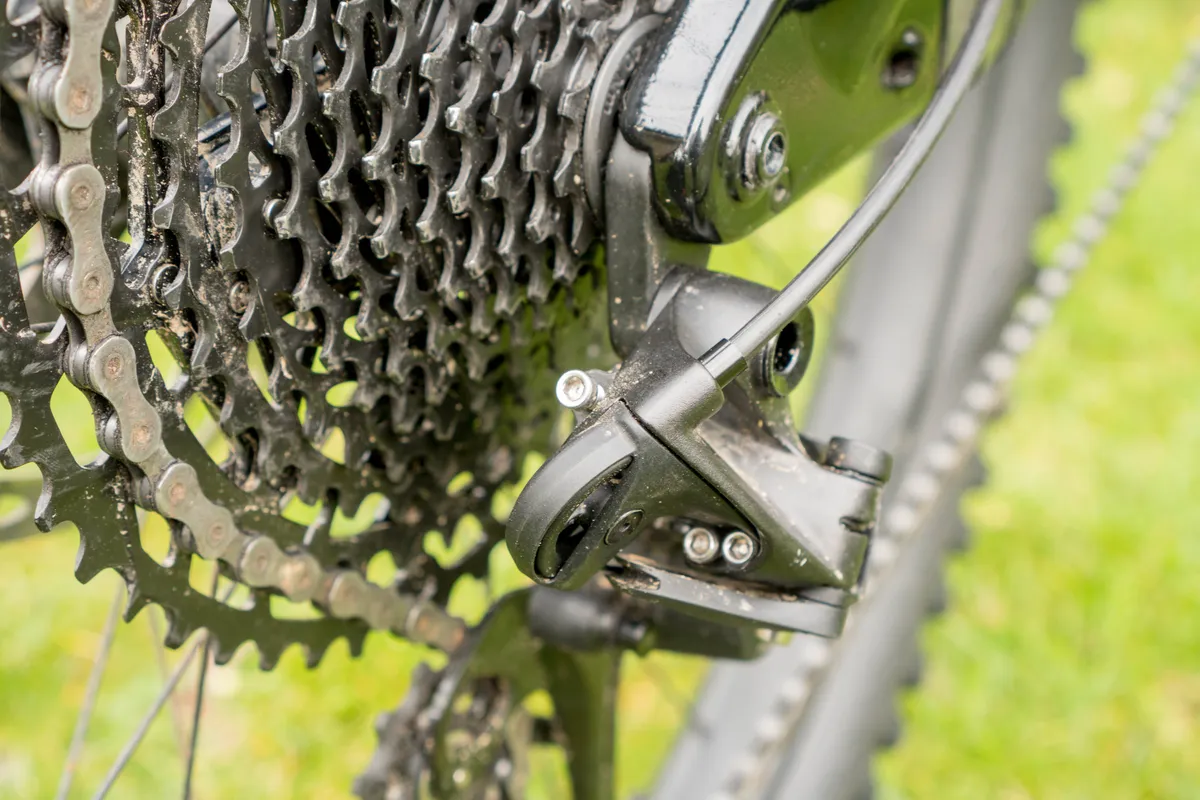
Installation of the derailleur, shifter, cassette and crankset was straightforward, and no unusual steps were needed to fit it all to the bike.
Following SRAM’s instructions to correctly size the chain, it was too long when set in the highest gear and the suspension uncompressed. I had to remove two additional links to set the chain to a length that meant it wasn’t slack.
Because the PowerLock is not reusable, setting the chain to a useable length meant using another link. In reality, I’ve been able to reuse SRAM’s PowerLocks more than once, despite SRAM not officially recommending this.
Setting the derailleur’s b-tension, as per all of SRAM’s Eagle groupsets, needs to be done perfectly to ensure shifting performance, otherwise shifts can become lazy and the chain noisy on the cassette.
Using SRAM’s chain gap tool, the b-tension should be set with the bike at its sag point. While SRAM’s instructions to set the b-tension gap are clear, in reality, the process is convoluted and could be simplified. Once the setup has been performed a couple of times, it does get easier.
The horizontally positioned cable port means a large loop of outer cable isn’t needed at the rear dropout, helping to keep the bike tidy and reducing the chances of it getting snagged on rocks, etc.
Indexing the derailleur and setting the high and low limit screws was simple, and cable tension was easy to set correctly, too.
SRAM NX Eagle groupset performance
I tested SRAM’s NX Eagle groupset on multiple bikes, including my Marin Alpine Trail XR and Yeti SB165 long-term test bike.
The groupset got a thorough work out on a host of trails in Scotland’s Tweed Valley, which took in some of the most challenging trails that were peppered with derailleur-high sniper rocks, chundery repeat bumps ideal for derailing chains, and rattle-inducing speeds on flat-out DH tracks that pushed all the parts to their limits.
Test conditions ranged from icy, freezing cold snow to hard-baked dust and copious amounts of gloopy mud.
SRAM NX Eagle rear derailleur performance
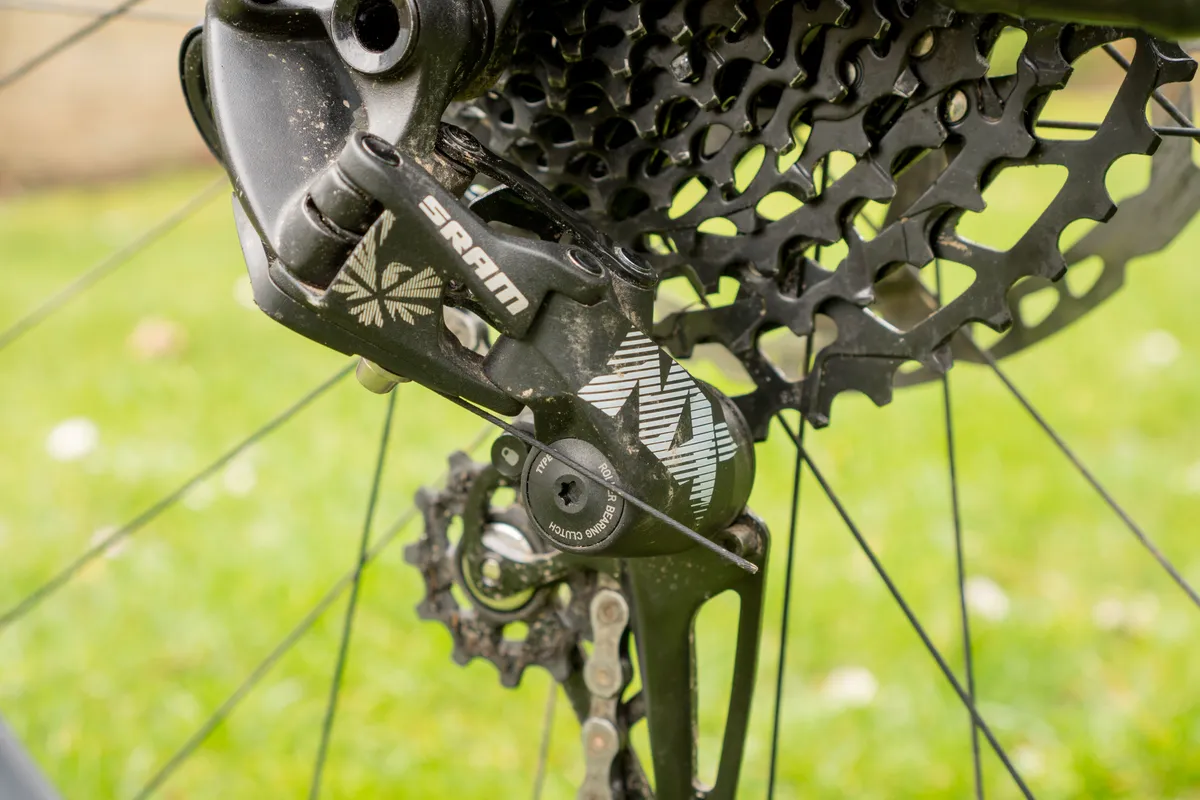
Impressively, the NX Eagle rear derailleur managed to control excessive chain movement well, given the required chain length to accommodate a 50t cassette sprocket.
It limited chain slap and kept noise to a minimum, although the chain was still able to bounce around a fair amount. The derailleur worked well with the chain and chainring, and I suffered no dropped chains during the test period.
When freewheeling, the derailleur held the chain in its selected gear and the gears didn’t skip when pedalling over rough ground. Shifting was consistent too, with few problems during the test period.
The clutch didn’t interfere with shifting, nor did it make shifts feel heavy. Equally, shifting when putting the power down was trouble-free and generally fairly quiet, with no loud clunks or bangs as a gear was selected.

While the derailleur’s performance was impressive, its build quality was less commendable.
The derailleur hanger bolt, even when tightened to spec, had considerable play from brand new – a problem we’ve experienced on many NX derailleurs. This doesn’t appear to affect performance initially, but the from-new play doesn’t decrease as the derailleur gets older and does eventually make shifts slower. This is less of an issue with GX models and above.
SRAM NX Eagle shifter performance
The shifter’s lever ergonomics are identical to the groupset’s more expensive counterparts in the Eagle range. It’s also Matchmaker compatible (unlike the SX Eagle range), so was easy to set up in a position that was comfortable for my preferences, and I would happily speculate the vast majority of other users will have no problems either.
However, the difference in shift quality and feel between NX Eagle and GX Eagle was stark. Although the shifter paddle was light to use and shifting performance remained consistent during the test period – not degrading after significant use in muddy conditions – individual shifts aren't very defined and it can be hard to distinguish between them. This makes the shifter feel a little cheap to operate and more defined clicks would improve the overall feel.
Although it is possible to shift five easier gears with one push of the lever, the amount of movement the trigger needed to access the fifth shift made it hard to operate without twisting my hand or wrist on the bar.
SRAM NX Eagle cassette and SRAM NX Eagle chain performance

After the test period, there was some wear present on the cassette’s sprocket faces but the teeth remained hook- and damage-free. The chain and cassette ran quietly together for the most part, and I had no issues with skipping or jumping. However, to keep them running quietly, a rigorous chain cleaning and lubrication routine was needed.
The black cassette coating resisted rust well and cleaned up with a small amount of scrubbing. The chain’s silver surface was less corrosion-resistant though and required careful drying post-wash to prevent rust.
Although the NX Eagle’s cassette offers only an 11t smallest sprocket, rather than the 10t sprocket of GX or above, I didn’t struggle with spinning out or wished I had a smaller cog.
I also much preferred the smaller jump between the 42t and lowest 50t cassette sprocket – compared to the 52t on other Eagle cassettes – because it had less impact on cadence or speed when the biggest sprocket was selected.

However, I would recommend running the NX Eagle cassette with a 30t chainring, rather than the 32t tested here, to get the slightly lower gear afforded by the 52t sprocket found on the other cassettes.
It’s unlikely switching to a 30t chainring will negatively impact the hardest gear unless you spend most of your time bombing down fast fire roads while pedalling.
The other issue with the NX cassette is its weight, which is just under 20g heavier than Shimano’s Deore 10-51t cassette. At 614g it is going to contribute significantly to the amount of unsprung mass – any parts that aren’t supported by the suspension – on your bike and can negatively affect suspension performance.
SRAM NX Eagle crankset with 30t chainring performance
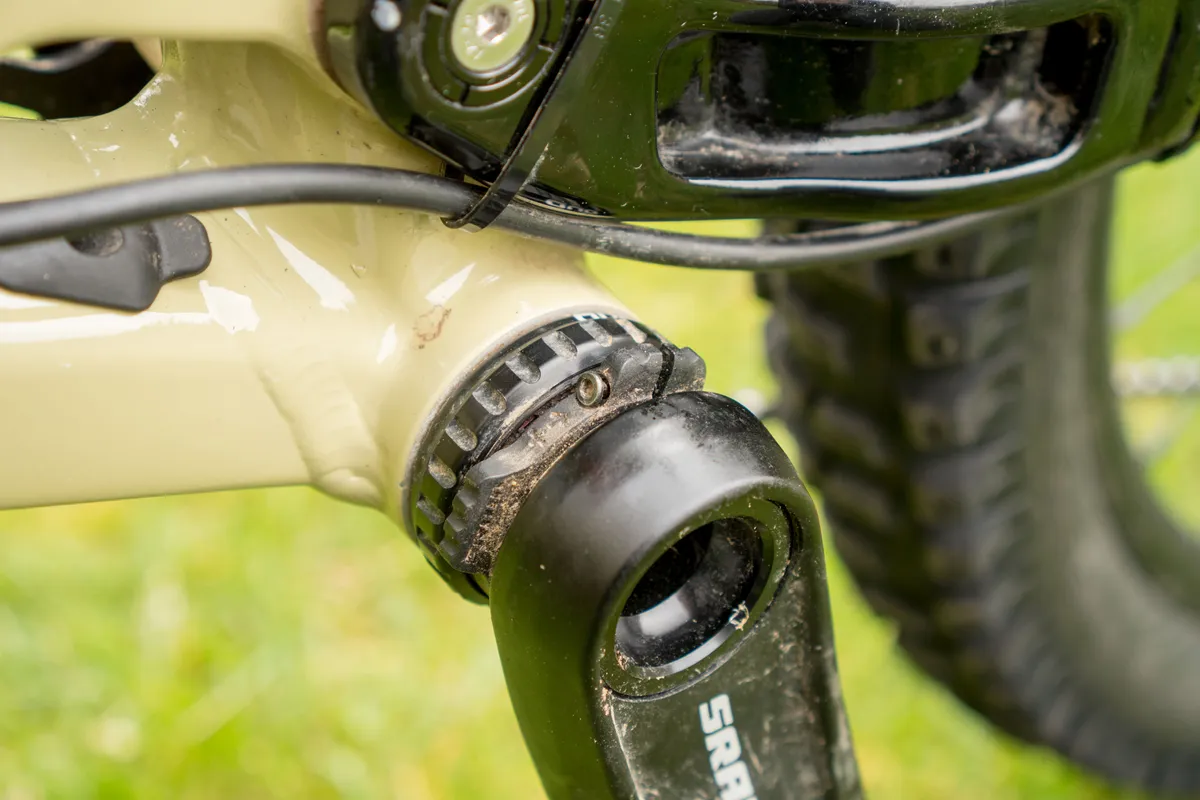
The NX chainring remained straight and true during testing, and although the chainring’s teeth were showing signs of cosmetic wear and tear, they remained hook- and damage-free.
The crankset’s black coating quickly wore off due to some shoe and ankle rub, which revealed the silver metal underneath. It’s a little disappointing to see a crank wear this quickly, even if it is only cosmetic, but it’s no worse than the GX Eagle AXS and Shimano M8100 XT drivetrains I've also tested.
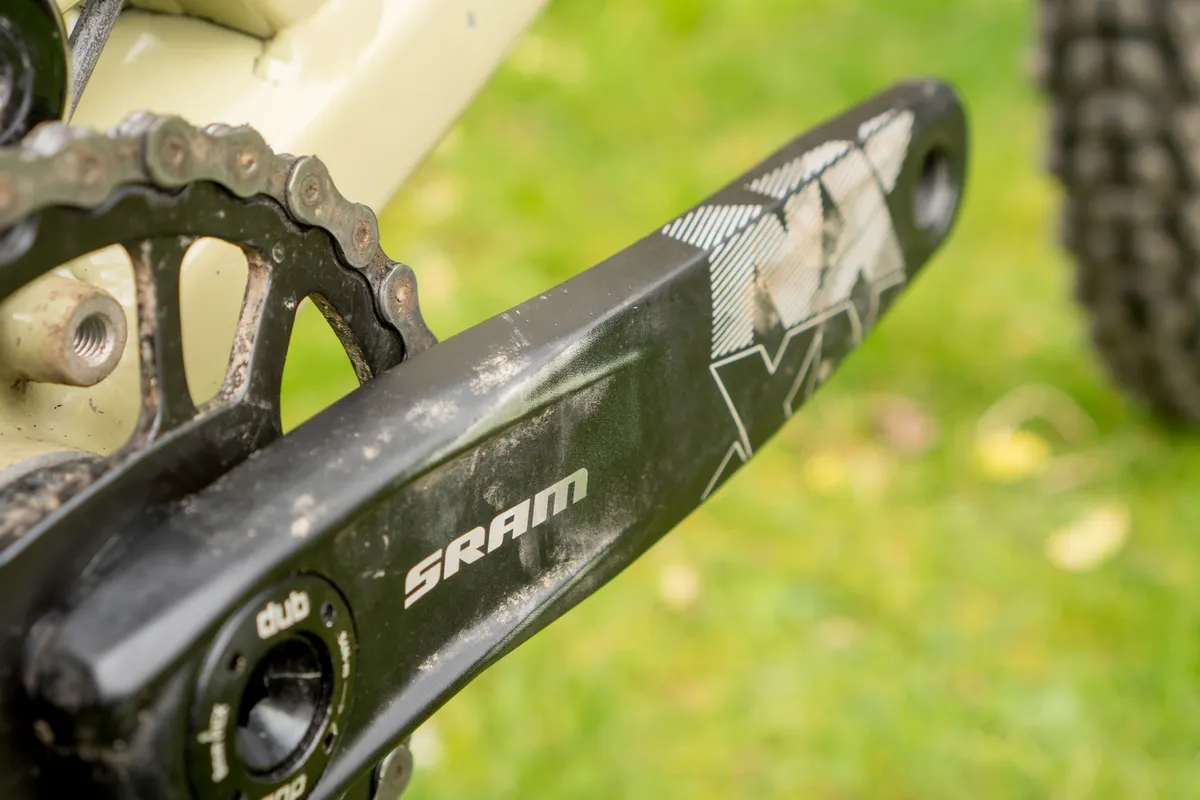
Furthermore, and similarly to GX Eagle kit, the DUB bottom bracket bearing preload lock ring came undone, causing the cranks to feel loose.
Because the lock ring is plastic, it’s not possible to get a sufficient amount of tension in either the lock ring or pinch bolt to keep the ring tight for any duration of time. A metal lock ring would help remedy this problem.
I also found the cranks' edges to be quite square, which did cause a small amount of discomfort when rubbed against my feet or ankles. Everyone pedals differently, but if you tend to rub your ankles against the cranks, this is worth considering.
How does the SRAM NX Eagle groupset compare to Shimano’s Deore and SLX groups?
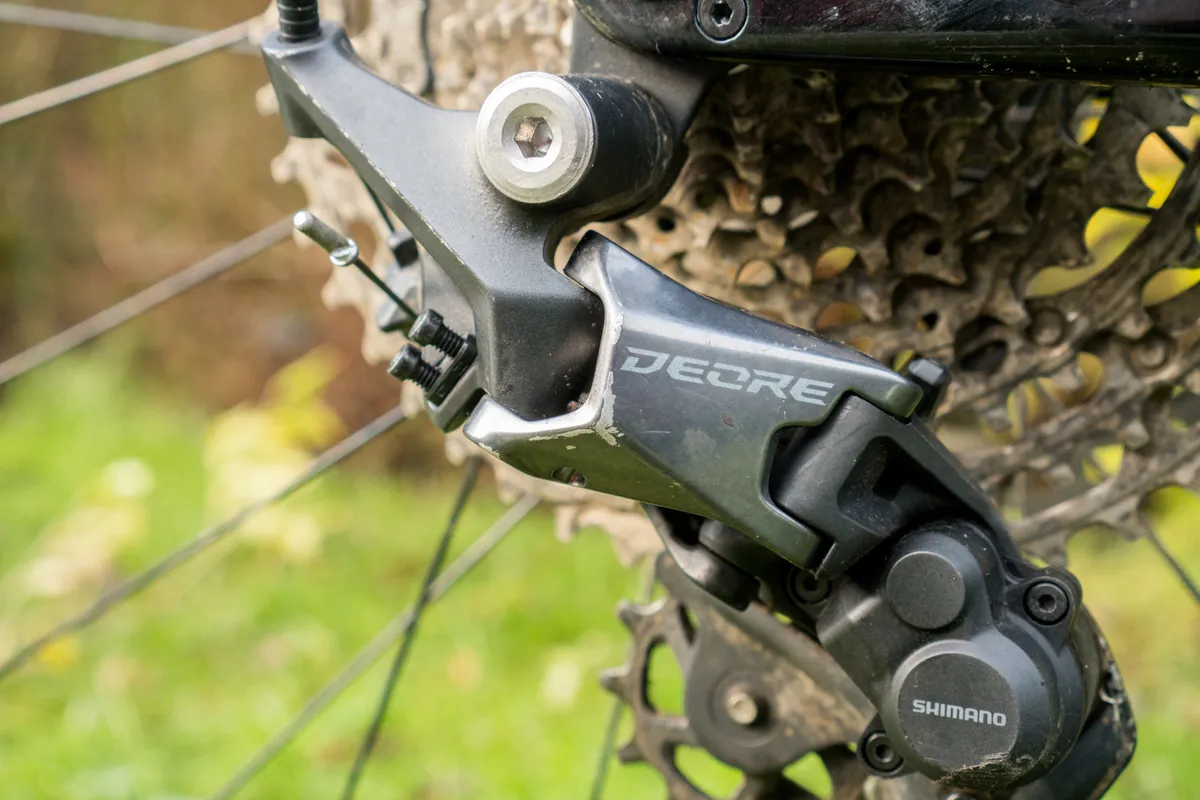
From a price perspective, NX is roughly comparable to Shimano’s SLX, sitting one up from the bottom in the hierarchy.
A full SLX groupset retails for £398.94 / $394.94 / AU$734 compared to NX’s slightly lower price of £365 / $375 / AU$563 / €410. Shimano’s Deore retails for £285.95 / $297.95 / AU$539.50, which is significantly cheaper than NX Eagle.
In terms of weight, the three groupsets compare as follows:
- Shimano Deore M6100 12-speed (excluding bottom bracket): 2,019g
- Shimano SLX M7100 (excluding bottom bracket): 1,864g
- SRAM NX Eagle (excluding bottom bracket): 2,049g
SRAM’s NX Eagle groupset is 30g heavier than Shimano’s Deore M6100.
Most of that increase is made up of the cassette and derailleur, so shaving some weight from an NX Eagle-based groupset would be relatively easy by upgrading to a GX Eagle level cassette.
Although, on paper, NX Eagle and SLX are direct competitors, the slight differences in price and weight mean NX sits somewhere between Shimano’s Deore and SLX.
However, performance-wise, NX Eagle struggles to match Shimano’s Deore, let alone challenge SLX.
NX Eagle’s shifting isn’t as crisp as Deore’s, where each shift has significantly more definition. The Deore derailleur’s clutch is adjustable – compared to NX’s non-adjustable version – and controlled the chain better than NX.
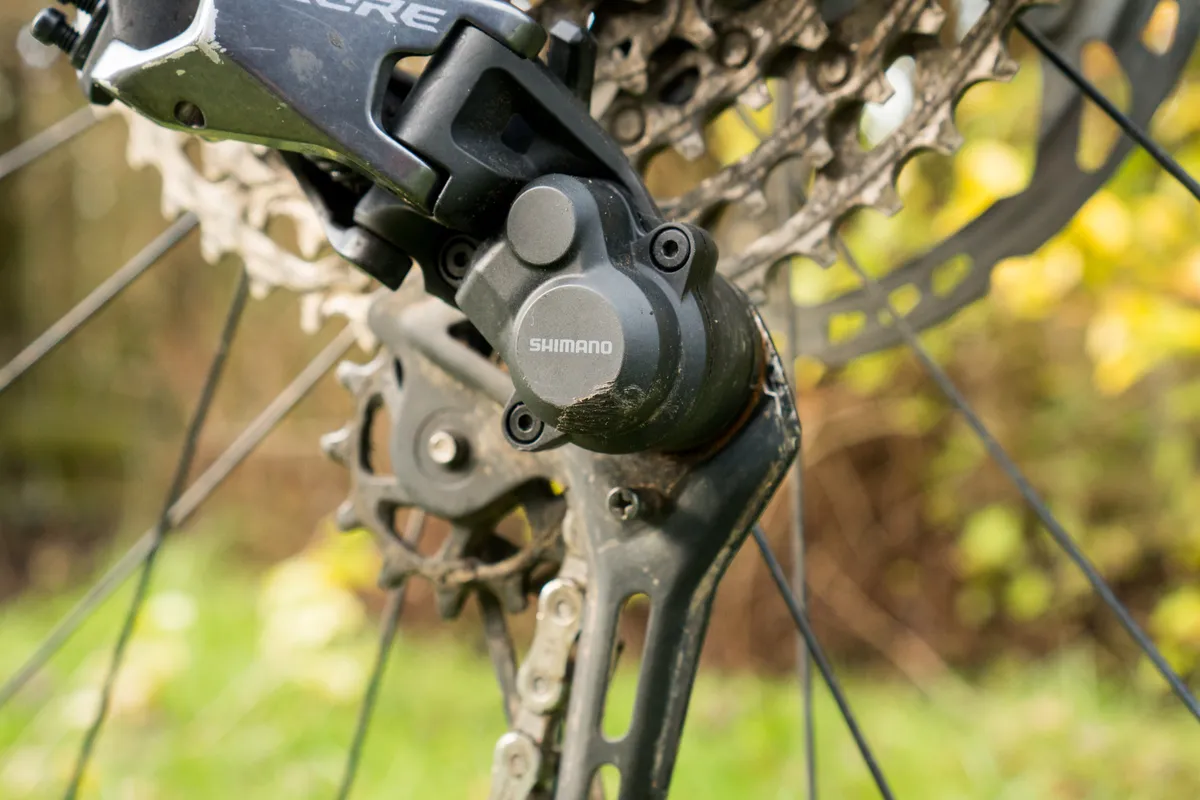
I personally found the 10-52t Deore cassette ratios, especially across the lower three gears, to offer more gradual and usable steps between each cog compared to NX Eagle, though there’s always some personal preference in gearing setup. Still, I found this made the gears more usable because large changes in cadence or speed weren’t required to compensate as gears were shifted.
Shimano Deore’s build quality appears to be better than NX’s, too. There was no derailleur bushing play or slop from new, and it coped well with a thorough thrashing. Despite NX’s from-new slop, my test sample’s reliability was good, though.
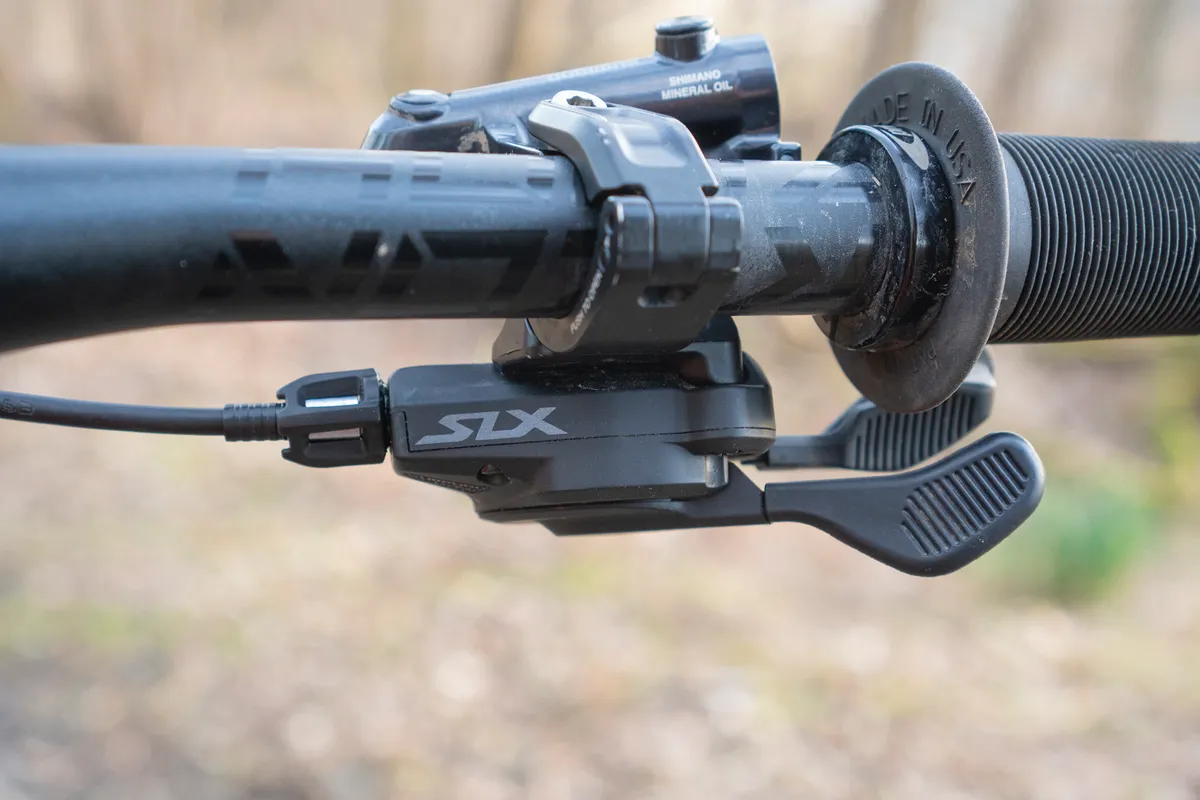
SLX feels leagues ahead of NX Eagle in terms of feel and performance and only costs a fraction more.
If I was upgrading the drivetrain on my bike and had access to – or budget for – a Microspline freehub body, I would choose Shimano’s M7100 SLX over SRAM’s NX Eagle.
If the freehub body change is a concern, your options become more limited, although there are plenty of Shimano-compatible aftermarket 12-speed cassettes that will work with HG freehubs, you just might compromise on some of SLX’s weight savings and shifting performance.
SRAM NX Eagle groupset bottom line

SRAM’s NX Eagle is a solid groupset with plenty of features borrowed from SRAM’s more expensive groupsets. However, shifting isn’t as crisp as it could be and the cassette and derailleur are quite heavy.
The derailleur’s build quality could also be improved, but didn’t seem to affect performance during the test period.
SRAM has built NX Eagle to offer a 12-speed drivetrain at a more affordable and accessible price, but in doing so has compromised performance, especially when compared to the more modestly-priced Shimano Deore and slightly more expensive SLX, which is ultimately where I’d spend my money.
Product
| Brand | Sram |
| Price | A$563.00, €410.00, £365.00, $375.00 |
| Weight | 2049g |
| br_whatWeTested | SRAM NX Eagle 12-speed groupset |
Features
| Crank options | 1x |
| Speed | 12 |
| Features | DUB crankset, X-Sync 2 Eagle chainring, Matchmaker, Zero Loss shifter, X-Actuation, Type-3 Roller Bearing clutch, Cage Lock, X-Sync jockey wheels, X-Horizon, HG freehub cassette, PowerLock chain link |
| Cassette options | 11-50t |
| Chainring options | 30t, 32t, 34t |
